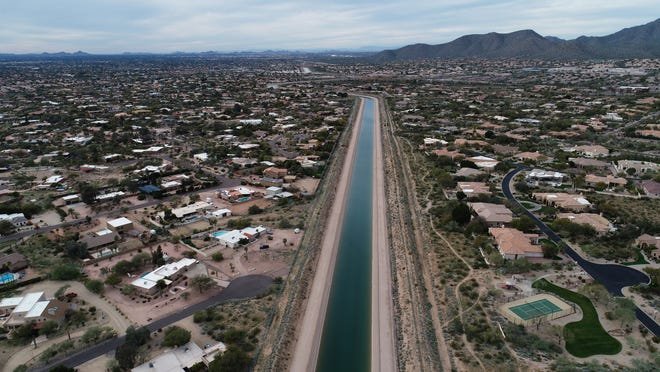Arizona has big water challenges, but it’s not on the verge of running out of water, as some media reports have suggested.
While the challenges need to be met, there are market solutions and regulatory measures designed to ensure sustainable water supplies for residents and businesses.
This means Arizona’s growth and development activities can continue because the hard work and planning has already been completed and continues to be actively managed.
Consider regulatory measures in place, such as the Groundwater Management Act of 1980 and the Reliable Water Supply Program administered by the Arizona Department of Water Resources.
They provide the legal and physical infrastructure to maintain a reliable water supply for 100 years to meet the state’s current and future needs.
These innovative and proactive actions are unparalleled, and as a result Arizona’s water conservation efforts rank among the nation’s top.
Population has exploded, but water use has not
The state has reduced its water use to levels seen in the 1950s, even as its population grew from 1.1 million to 7.1 million. This is due to efficiency gains, conservation and the reduction of agricultural land, which is an important water user.
According to data from the Arizona Department of Water Resources, Use of municipal waterWater demand, including residential use, is only about 20% of Arizona’s water demand.
Municipal Providers Within All Active Administrative Areas (AMAs) Reduced groundwater intake A 26% increase from 2000 to 2019.
Good management and conservation efforts are working well.
Most of the Phoenix metropolitan area does not face water shortages
It is important to understand that water supply issues are not uniform across the state.
Some areas outside of Phoenix may be experiencing water shortages, but the area as a whole is not.
In fact, Phoenix has the ability to grow responsibly for the next 20 to 30 years thanks to its conservation programs, and the City of Phoenix is included in one of the following: 5 AMAs to guarantee water For projects within service areas.
Currently, state municipal water utilities designated by the Arizona Department of Water Resources are: Reliable or sufficient water supply This means that enough water of adequate quality will be continuously available to meet the expected water demand for at least 100 years.
Phoenix, Pinal County, Prescott, Santa Cruz, and Tucson, the AMAs covered by the Groundwater Act, occupy less than a quarter of the state’s land area but are home to more than 75% of the population.
Arizona has been storing water underground for years
As mentioned earlier, Arizona has already taken steps to address its water problems.
the state is Stores 5 times as much water as it consumes And in its history, it has never mandated usage restrictions in municipalities or residential areas.
It stores 13.2 million acre-feet of water in reservoirs and underground, of which 7.1 million acre-feet are stored in Greater Phoenix.
In addition, the state pumps excess water from the Colorado River into central Arizona and its largely unused underground aquifers.
Phoenix is concerned:About the ‘sensational’ groundwater report
Existing infrastructure allows Arizona to pump and replace water as needed, making its water supply more resilient during droughts.
Water experts believe this is the cornerstone of the state’s reserves and a status that distinguishes it from other Mountain West states.
We are more ready than any other state
Arizona operates under a multifaceted portfolio of water supplies with the most advanced groundwater management programs in the United States.
Vast aquifers give the state access to water during droughts, and Arizona has prepared for decades to declare a shortage.
Arizona stands apart from the Western and Mountain West states by relying less on the Colorado River for its water supply.
just 36% of Arizona’s water supply It is fed from the Colorado River. By comparison, Nevada is 100% dependent on the Colorado River. It accounts for 60% of California’s primary water supply and 30% to 40% of Colorado’s water supply.
California does not have a well-developed groundwater management infrastructure compared to Arizona. California sends more water back to the Pacific each year than the city of Phoenix uses in a year.
Studies show that 93% of the water entering the waste stream in the Phoenix metropolitan area is can be collected and treated for drinking. This is a key differentiator for Arizona and another reason the state is a national leader in water reuse.
In other words, the Arizona water landscape reveals a brighter future than many headlines predict.
Growth and development can flow with natural resource flows if they continue to be managed in innovative and sustainable ways.
CCIM’s Adam S. Finkel is the co-founder and principal of CCIM. tower capitalis a Scottsdale commercial real estate finance firm that serves all asset classes, including residential. He has lived in Arizona for many years. please contact himadam@towercapllc.com.







